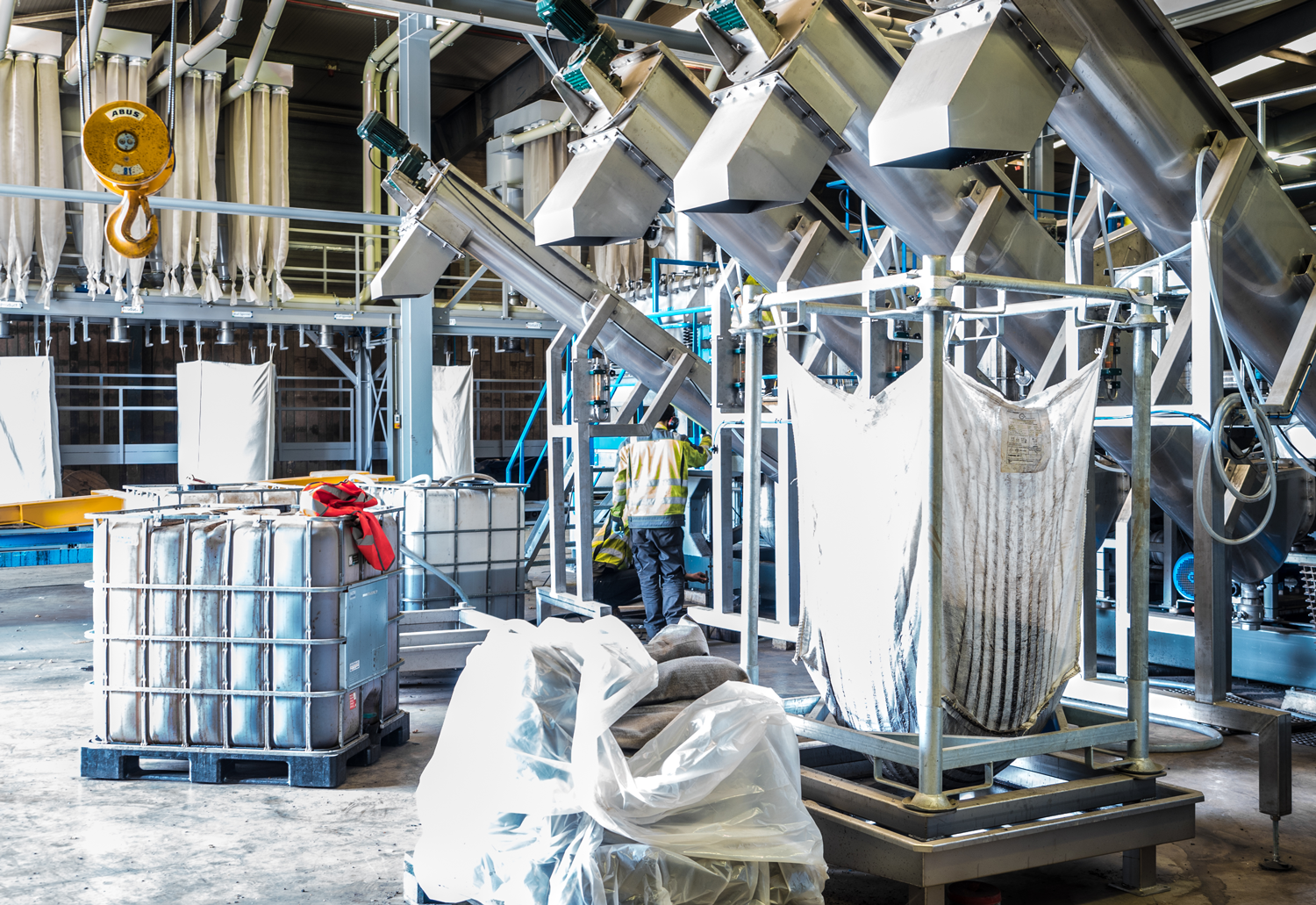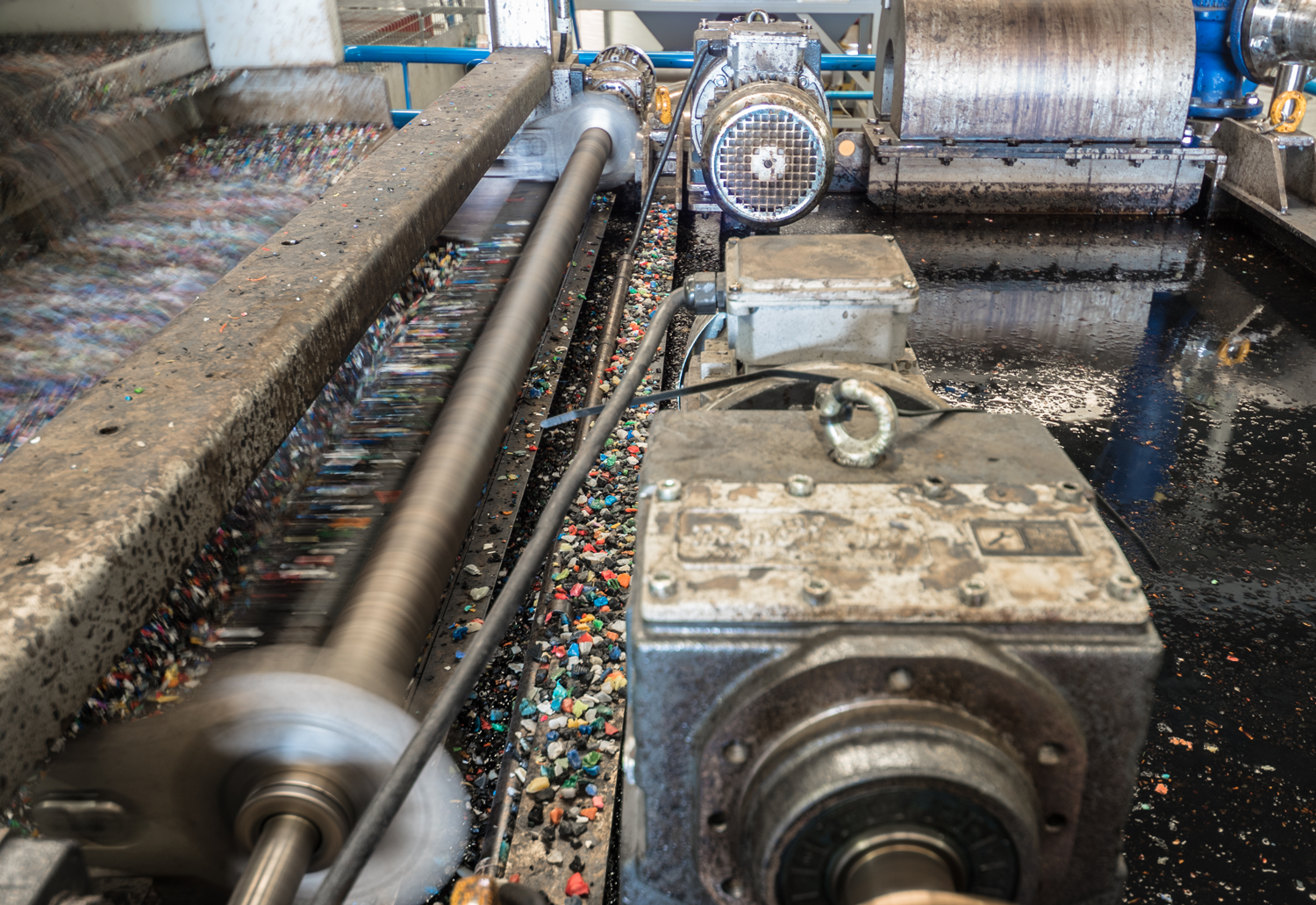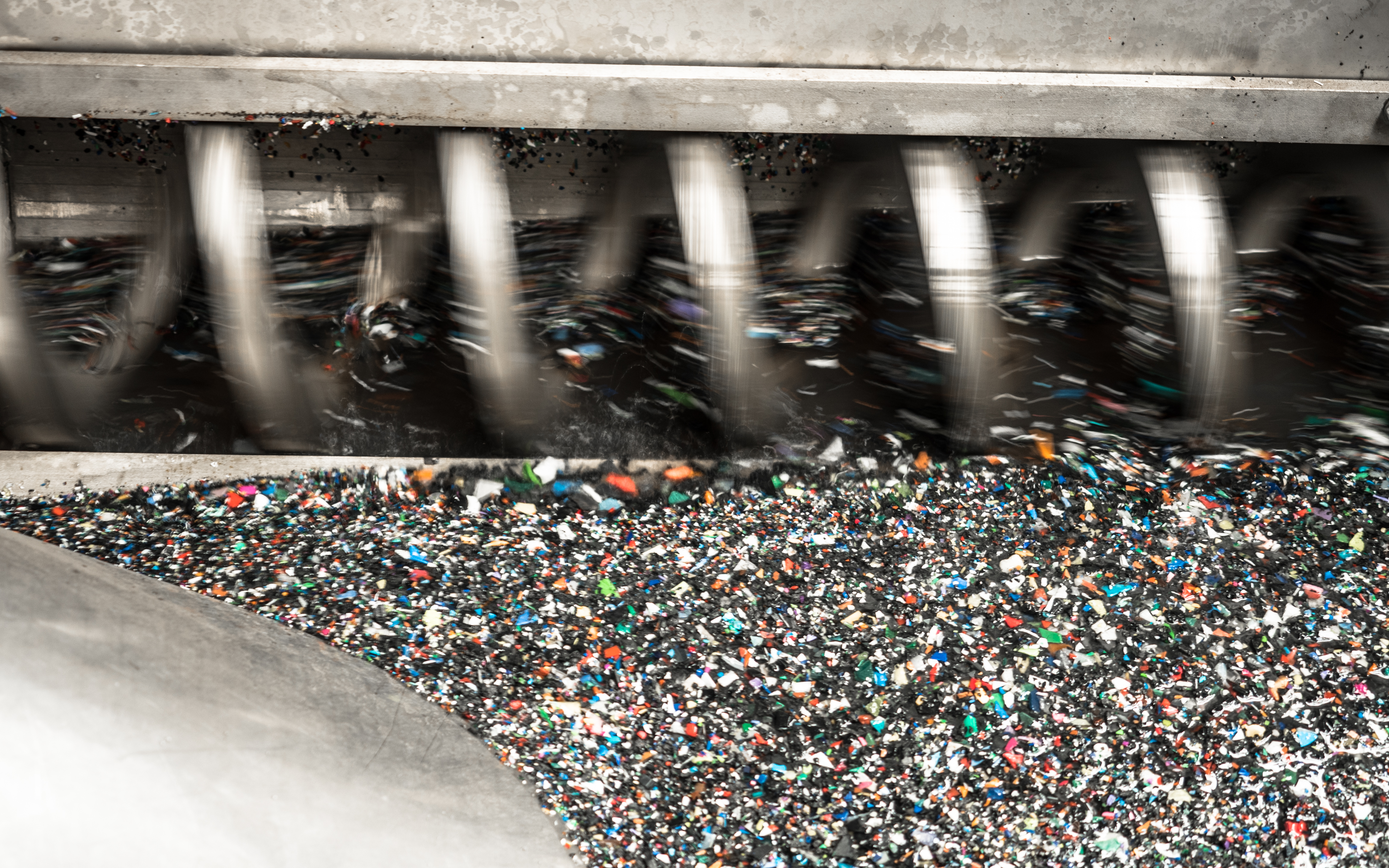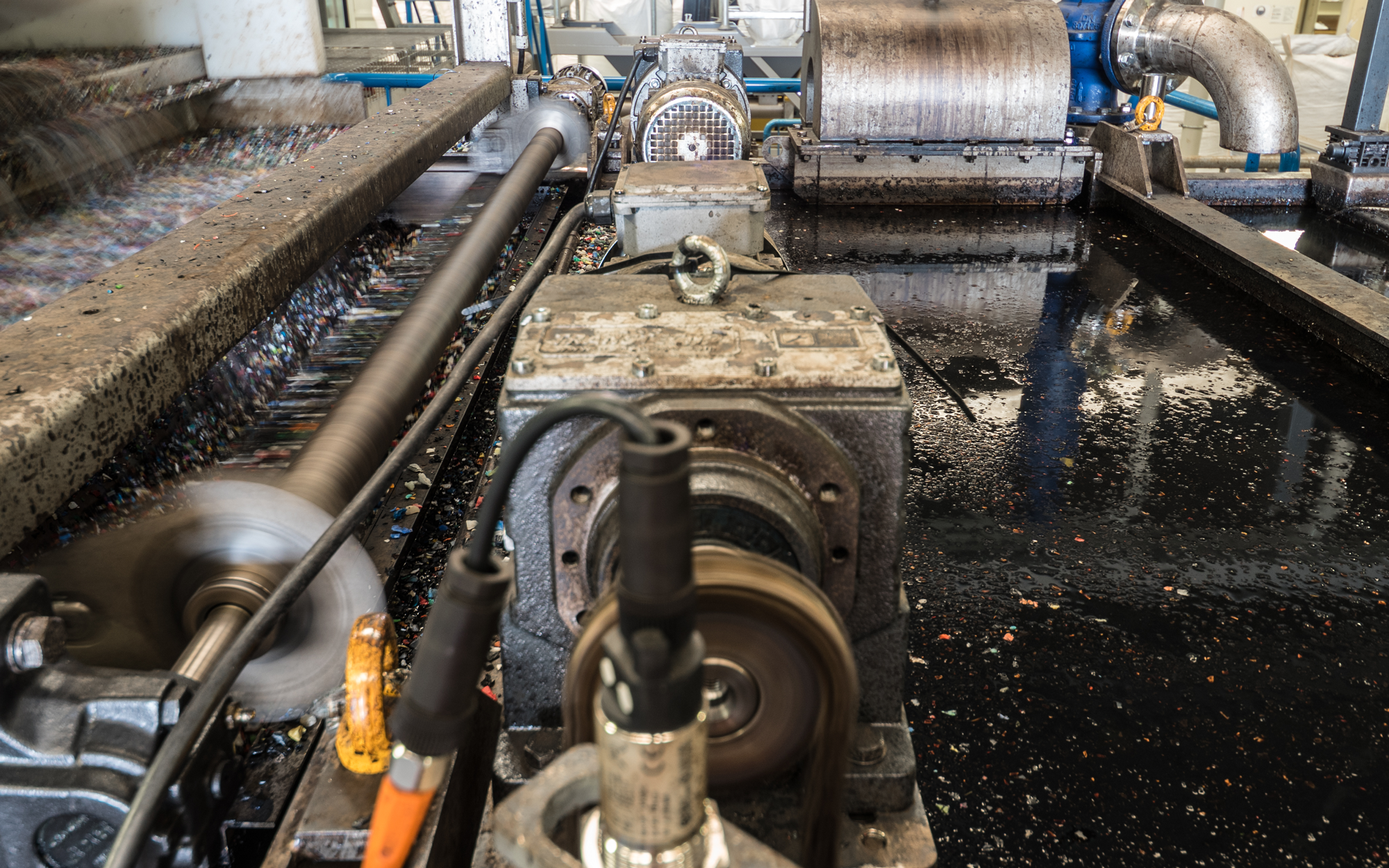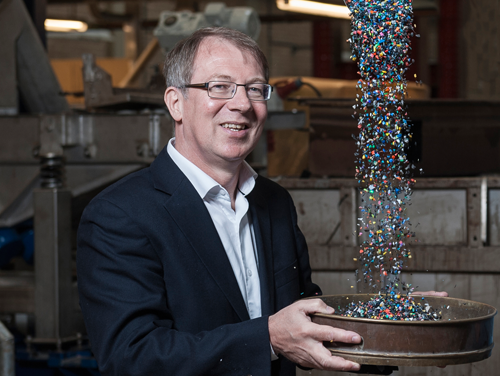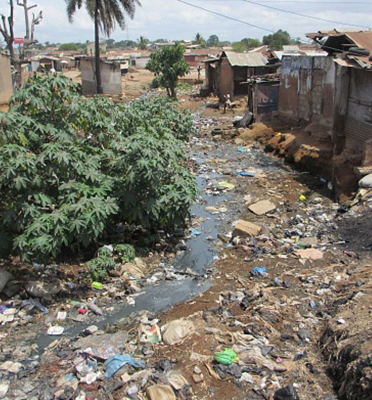The methods used to recycle plastic and electronic waste has made great strides in recent years, says Peter Rem, professor of Resources & Recycling at TU Delft. The recycling plants of the future are no longer huge sorting areas and big separation installations, but distribution centres for recovered raw materials which can be made into high-quality products. The award-winning recycling technology once started at TU Delft and has now found its way to the first working factories.
It’s not something you would stop and think about very often but a yoghurt pot is really quite a sophisticated product. ‘Its walls need to be very thin to minimise weight,’ Rem says. 'It also needs to be impervious to gases and UV light because these will spoil the yoghurt. Considering all these packaging requirements, we are actually looking at a very advanced product, and one that is fundamentally different for each use, whether it be packaging for yoghurt, meat, spring water or beer.’ The Netherlands uses around 40 euros worth of plastic packaging per head of the population. Despite the best efforts of consumers and waste processors, recycling only recoups one to two euros in recovered raw material.
‘Some 250 different plastics are used in packaging but at with traditional technologies we can only separate these into four or five broad categories of polymers, such as polyethylene and polypropylene. Once recycled these are only fit for low-grade applications and there are not too many of those about,’ Rem explains. In other words, that yoghurt pot could be recycled to make a coat hanger or a builders bucket but would no longer be suitable for packaging food. And as more and more European countries are recycling plastics, the market value of recovered raw materials will continue to plunge. That is why, in an ideal world, we would like to separate plastic waste into as many as fifty to a hundred different raw materials.
Monster installations
But that is easier said than done. ‘Separating plastic packaging into four kinds of plastics alone would take twenty machines. To separate it into fifty you would need a monster installation with hundreds of machines. It simply wouldn’t be feasible.’ And yet it is now possible thanks to innovative ways of sorting. Rem’s dream is to eventually achieve complete recycling of the food and beverage industry. That has everything to do with consumer attitudes on sustainability. ‘Most people have mixed feelings about plastic packaging. On the one hand they appreciate the increased food safety it brings but on the other they see that it leaves us with something big, empty and harmful. If all that packaging could be recycled properly consumers wouldn’t have a problem with it.’
That dream is now one step closer with a major collaboration within in a Perspectiefprogramma of the Netherlands Organisation for Scientific Research (NWO), in which universities and industry, led by Rem, are working together. The first major plant in Amsterdam (PRA) has been running at full capacity since 2021. It is based on Magnetic Density Separation (MDS), which separates waste according to density by means of a sink-float method. The plastic waste is shredded into small particles which are put in a bath of ferromagnetic fluid. Specially designed magnets are then used to change the density in the fluid, so the particles will start to float at different levels according to their density.
Patented separation technology
MDS is not new. The patented technology was conceived and developed by Rem and his colleagues some fifteen years ago. The first separators were developed and used to separate non-ferrous metals. MDS for plastics is much more advanced. The Urban Mining Corp (UMC), of which TU Delft is a shareholder, brought the technique to market. The very first installation was in Biddinghuizen. The technique has since been further optimised.
‘Together with four universities, we brought together the best and latest in physics and technology,' Rem says. TU Eindhoven took fluid flow to the next level by increasing the laminarity of flow. This gives a lot of control over the floating particles. The TU Twente developed superconducting magnets which divide waste into ten or fifteen material streams.’ Utrecht University’s expertise is in nanofluids, such as the ferromagnetic fluid used to separate particles according to density. ‘They can produce a made-to-measure fluid with exactly the right properties for the process.’ However, intense magnetic fields can cause fluid instability, which is where the Radboud University in Nijmegen came in. ‘The Radboud has magnets of every conceivable strength in their high field magnet lab, which provided us with an excellent testing ground for the fluids.’
It was not just a collaboration with universities. It involved many different companies, which also contributed money for research purposes. The food and beverage industry is represented via the Dutch food producers association NFLI. ‘That is a very important partner. Their members are the ones to reuse the plastics for their packaging and it is up to them to tell us what the requirements are.’ And, of course, the big recycling companies are involved.
Sprinkler system sorts plastic by colour
Apart from the MDS process, the team also explored a technology to separate plastic flakes according to colour by means of sensors. ‘It is impossible to remove the dye added to plastic. You can’t turn red or green into white,’ Rem says. It is much like recycling glass in this respect, but there is more. ‘By sorting according to colour you also sort according to other properties. Detergents often come in white bottle, for instance, so consumers can see straight away which isle to head for. In the same way the bottles contain additives/additional elements which make them suitable for carrying detergent. So if you have separated the polyethylene and then go on to pick out the white flakes, you can be pretty sure you have got hold of the ones used in packaging detergent.’
Making that happen was not as easy as it sounds. In order to sort a 20,000 tonne plastic per year you would have to colour sort 10,000 flakes every second.’ With the help of cameras, it is now possible to separate five different colours. ‘When the camera has detected the colours you can moisten flakes of a certain colour so they become slightly sticky. The machine then picks them off with a speed of 10,000 flakes a second. This is possible thanks to a sprinkler system which can produce half a billion drops per second. The trajectory of each drop – straight down or curved - is decided separately. ‘In actual fact it is a glorified garden sprinkler,’ Rem says. But what it resembles most is a printer system ‘Some printers build an image from tiny drops of ink, often based on huge amounts of information. In order to make half a billion decisions per second you need to send half a billion bits to the sprinkler or print head.’
Recycling electronic waste
The process is equally effective for recycling electronics. ‘Electronic waste presents us with a similarly complex problem of hundreds of materials put together in small scale objects in combinations that are not easy to disentangle.’ This opens other perspectives, for instance, when recycling indium, or other rare raw materials. ‘Touchscreens contain indium tin oxide, a very special type of material because it’s both transparent and conductive. Indium is scarce and in order to recycle it we need to distinguish between the indium and the glass.’ It would not be much use to go by colour in this case since both materials are transparent. But by using infrared sensors we can establish the specific reflection spectrum of each material. Then all you have to do is remove the different particles separately from the conveyor. Not a problem, Rem says. ‘If you can make it wet, you can recycle it.’ The first MDS recycling plant for electronics is under construction and will be tested from summer 2023.

